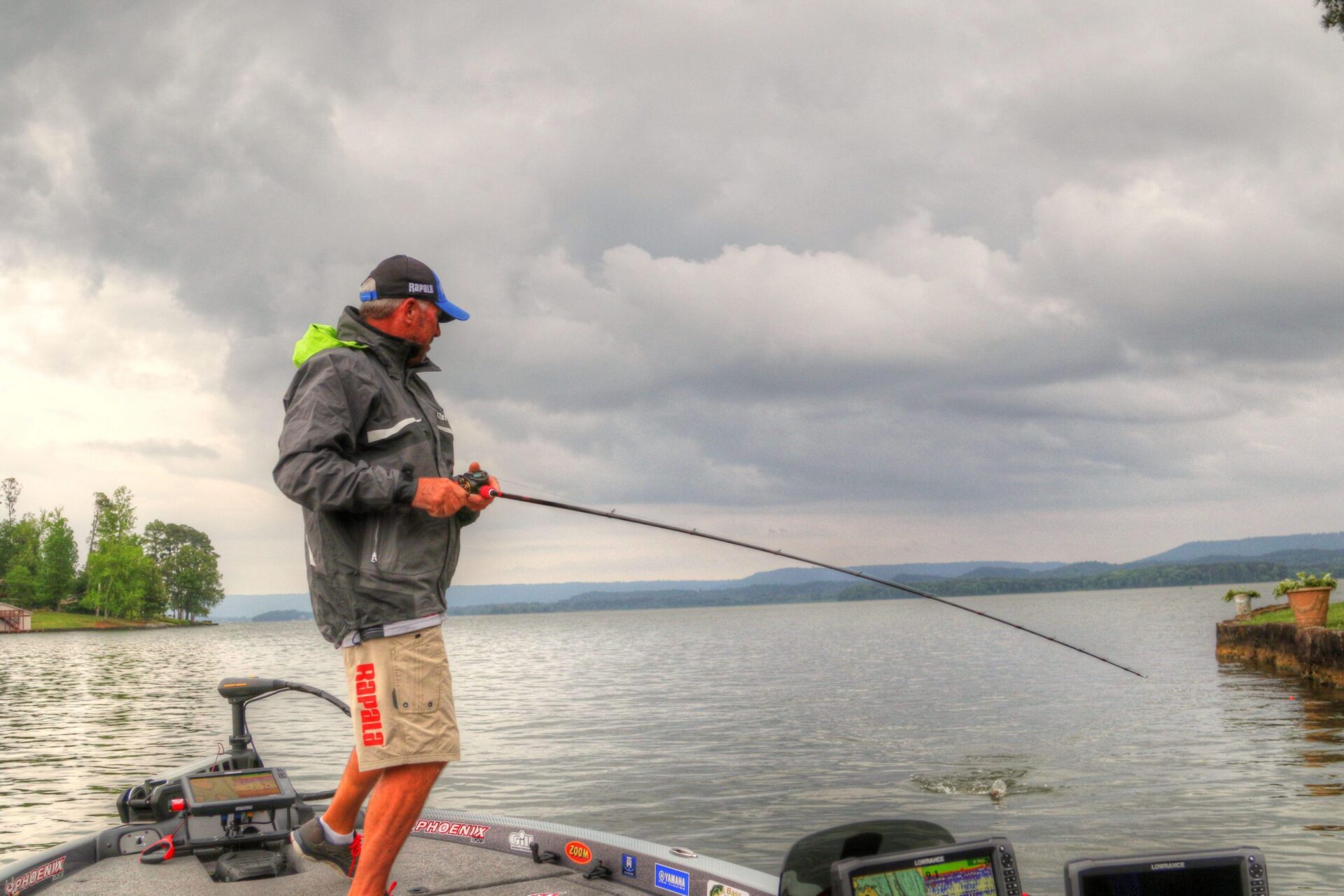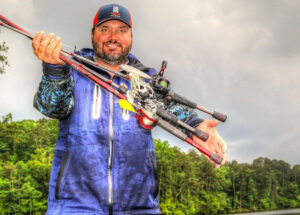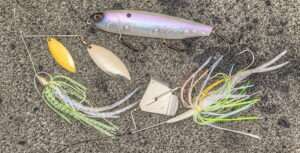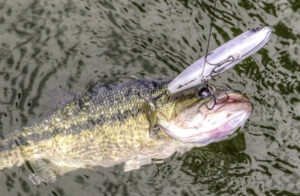When the leaves start rustling and that first rush of cool air hits his face, Randall Tharp knows it’s about to get real. The rapid temperature drop of a summer storm may not be enough to significantly vary the water temperature, but the pro would bet big on a spike in activity, complements of a fluctuation in atmospheric pressure.
“I’ve found throughout the course of my career that those are actually the best days to fish,†Tharp said of a stormy day’s gangbusters potential. “There are always these windows in which fish feed — especially big fish — and one of the best windows I know is when a storm is approaching.
“That pressure is changing and it may last 10 minutes or two hours, but the bottom line is that just about every time this happens, you do have a window.â€
IDENTIFY WINDOWS AROUND STORMS
Tharp’s fellow Elite Series pro Greg Hackney loves reaching for his rain jacket because that means the table is set for a feast of angling opportunity. His plan is simple: get to the good stuff.
“I want to make sure I’m around an area I think has some quality bass,†Hackney said. “If the conditions have been the same, regardless if it’s been sunny or maybe it’s just been cloudy and still all day; when one of these storms comes through, it allows me to power fish.â€
Unpredictability defines summer weather, particularly in the south, so that storm influence could range from a quick pop, in-and-out kinda deal, to a plodding drencher. Whatever the case, Hackney expects a window of opportunity.
“When that weather changes, everything become volatile and fish become really aggressive,†he said. “You can typically generate a lot of bites than what you had before the change in the weather. So, you want to make sure you’re on ‘the juice’ when that weather change occurs.â€
In addition to barometric fluctuation, Tharp sees the wind associated with approaching storms as a clear indication of where he wants to focus his attention.
“On a bank that has an abundance of bait, you can use that wind to your advantage,†he said. “It will get that bait pushed up on that bank and the bass will be right there capitalizing.â€
KEEP YOUR BAITS MOVING
Tharp has no hard-and-fast rule for optimal bait choices during pre-storm conditions. His general thought is that whatever has been working for you will probably see enhanced effectiveness.
That being said, he’s definitely a fan of pulling out the Chatterbait, as its baitfish profile and aggressive presentation tends to trigger big bites. That blustery, pre-storm change certainly stokes the fire, but Tharp knows the benefit often begins well before things get sporty.
“Just cloudy or overcast conditions can trigger a good topwater bite with a walking type bait, a hollow-bodied frog or a buzzbait,†he said.
While shooting on Lake Guntersville recently, the steady accumulation of darkening rain clouds steered Tharp to a the point of a residential shoreline where he knew the impending weather would find opportunistic bass capitalizing on the wave-tossed baitfish.
Sure enough, his first cast with a Storm Arashi Topwalker 13 drew a paint-chipping strike from a fish. Considering that fish recognize these windows of weather-born opportunity as their chance to pack in a day’s worth of calories in a relatively short period of time, you can expect just such rapid response to a prudently placed presentation.
Hackney also likes a big topwater bait like the Strike King Sexy Dawg, but he’ll also work some square-billed wiggle into the mix depending on water clarity and depth. When the pre-storm wind kicks up, he’s all about the big-bladed spinnerbait.
“When these systems come through, typically wind increases, and there’s not a better bait to throw in windy conditions than a big-bladed spinnerbait,†he said.
MOVE FAST WITH STORMS
Whatever bait you choose, Tharp stresses stepping on the gas and finding the hot zone.
“I’m trying to catch the biggest fish and as many of them as I can,†he said. “If I feel like they’re feeding really good, I want to cover more water.
“If they’re not biting, I might cast every two or three feet with a particular lure. But if they are biting really good, I might cast every 10 feet. Obviously, if a fish is coming 10 feet to get a bait, I don’t need to cast every five feet. When that front is approaching, I would definitely speed up.â€
STAY SAFE WITH BACKUP PLAN
Prime rod-bending opportunities notwithstanding, Tharp said one of his top considerations for those pre-storm periods is shelter. Cooler air, wind driven waves and snapping fish — that’s pure angling intoxication.
Just don’t let it distract you from the perilous side of storm fronts.
“If you know storms are coming in that day, when you get to your fishing spot it’s always good to locate the closest place you can take cover,†Tharp said. “That could be a marina boat dock or single boat houses, which have saved me a bunch of times.
“If I know there’s a potential for stormy weather, I’m going to make sure I have an escape plan. Fishing’s not worth risking safety, so you need to have a plan because the weather can turn on you quickly.â€

















